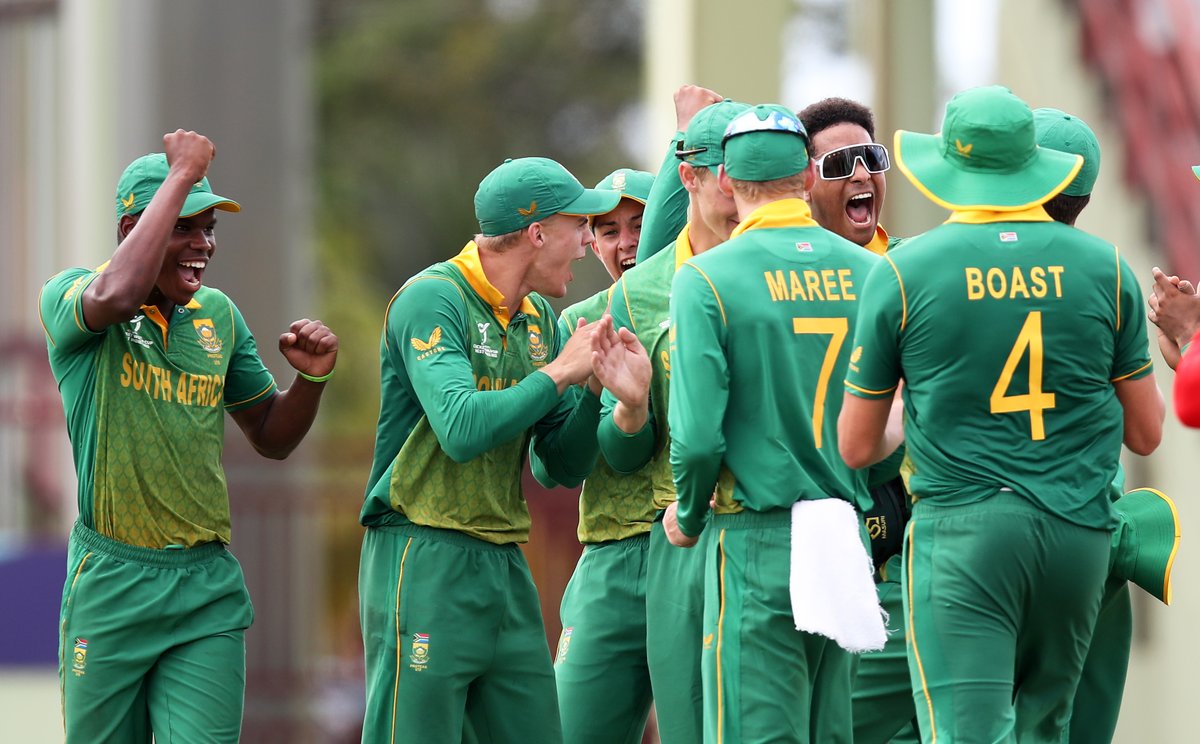This article is from April 2021: Issue 10 of Cricket Fanatics Magazine
Having a core group of coaches, each of whom focuses on different age groups, is elemental in developing cricketers at schoolboy levels, which is the same tune that was sung by various head coaches from around South Africa.
The former Director of Cricket of Grey High School in Port Elizabeth, Michael Smith, said back in April 2021 that coaches in particular “make a massive impact” in terms of development.
“At Grey High, our structures work really well and we have the right coaches in our different age groups,” Smith told Cricket Fanatics Magazine.
“Coaches have a massive impact on the development of the players at different levels. I think we have the right guys in the right areas.
“A lot of our focus goes into development, but a lot of work also goes into our skills and game-plan management.”
Smith, who had to return to SA from Pakistan after the PSL season was postponed mid-tournament due to an outbreak of the Coronavirus, said, as school coaches, they strongly strive to hone the mental development aspect within the game.
“We have quite a big focus on [developing] soft skills and getting their cricket IQs up – [particularly] on how to deal with different situations.
“We have three level-3 coaches at different levels with our teams. We also have specialist coaches coming in,” he said, adding that these outsourced coaches focus on different parts of the game such as, for example, batting, bowling and wicket-keeping.
“It’s nice for the boys to be around other coaches, who can add value to them as well, especially when they’re still playing at a top level.”
Grey High, in particular, is also granted the adequate facilities needed to excel at the sport.
“We have 12 turf nets, 10 astro nets and five fields, which I think goes a long way because our top players are continuously playing on turf wickets,” Smith said.
“Concrete is great to do certain work on, but if you really wanted to be practising your skills you need to train on turf wickets.”
Smith added that Grey High’s coaching contingent are “huge believers” of developing the fundamentals within the game.
“[We monitor] whether the players can do the basics really well for long periods of time,” he said. “Particularly in the younger age groups, we focus heavily on techniques and basics.
“But we do also allow the boys to use their skills a lot. If we need to use a certain skill, then can we do it? If we need to play a reverse sweep at U15, have we practised it and do we know when to do it?” He rhetorically asked.
“We do encourage the boys to learn and grow a bit, while helping them along the way.”
Smith also emphasized the importance that top-brass cricketing schools, such as Grey High, continue to play against elite oppositions from around South Africa.
Speaking of such, Peter van Rooyen, the Director of Cricket of King Edward Secondary Vll (KES), one of the leading cricket schools in SA, said they “are very fortunate” to have top-quality coaches within their system.
“We have very good coaches who take quite a bit of pride in eye-coaching, which starts from a young age, from U14, all the way until the 1st team,” Van Rooyen said.
“At school, we also have Jimmy Cook (former South African and Transvaal cricketer), who runs his own academy, and he’s involved with the U14s as well. He sets a very high standard from early on to be able to develop top-quality players.”
Van Rooyen said their coaching set-ups are “technically equipped” to help out players using video analyses in terms of honing their techniques when it comes to bowling, batting and fielding.
“Video analyses are a big part nowadays to help players to perform and get better,” he added.
Mental coaching also remains a priority, he insisted.
“I’m hoping to bring a mental coach on board at some point in the new season,” he said. “Players definitely need to be coached mentally and it’s an avenue we need to exploit.”
In terms of transformation, Van Rooyen said they “select purely on merit”, but with that approach, they still meet the various transformation needs and requirements.
“We are lucky that we’ve had players on merit [coming through] in each age group that we could select from.
“We do try our best to incorporate those players [of colour]. But in last season’s 1st side we had, at some stages, five players of colour, all of whom were selected on merit, which I was very chuffed about because I think that was the most in our history.
“At the moment we have about four players of colour playing on merit, and we see them as any other player,” he said, adding that transformation was not a core focus of theirs, as players of colour are naturally “coming through the ranks, every year”.
Van Rooyen said the school system in Gauteng, wherein KES is situated, is “relatively strong” and which is helped considerably by the presence of “top-quality boy and co-ed schools” in and around the Johannesburg vicinity.
“We get very high-quality cricket, week in and week out. Based on that, I presume this is why the Lions perform fairly well at the Cubs Week every year.
“There are no ‘Mickey Mouse’ games in-between. I don’t think we necessarily need to change too much.
“I just think we could play more games in Term 3 to get more cricket under the belt. That is actually the best time to play cricket with regards to weather.”
Jaco Zeeman, the head coach of Rondebosch Boys High’s 1st XI in Cape Town, said their school has laid the primordial foundation in which to propel young cricketers to the level needed for them to excel.
“We, at Rondebosch, have a very strong cricket culture and we have top facilities at the school. We also have teachers and coaches who are all passionate about developing young cricketers,” Zeeman said.
“We also attract top cricketers. Success breeds success and the more people who find out about Rondebosch’s cricket, the more cricketers would come to the school, which is sort of a self-fulfilling thing.
”Zeeman added that several of their players play provincial cricket, while many of them get private school coaching, which provides great value to the various players’ identities.
“It sort of answers the question: What does this kid need right now to be successful?
“They would follow a broader programme of development, such as in junior cricket you want the boys to know how to play the short ball and then in high school you want them to be able to play spin properly, because there are different strategies against spin.
“You want the boys to streamline their approaches between their private coaching and provincial coaching to clear their minds. It’s a two-fold thing.
”He added that this was their “biggest job at Rondebosch”, because the kids’ minds tend to become “cluttered” from the different input they receive from the media and private coaches.
“There are fundamentals we like to focus on, such as balance, contact points, set-up positions and pressure.
“We want these kids to focus on one thing at a time while getting a clear [understanding] of what is important now.”
With regards to transformation, Zeeman said the school has formed “good relationships” with some businessmen and old boys to help them create more opportunities for young, disadvantaged and talented cricketers alike.
He added that the Western Province Cricket Association is also “fully supportive” of their initiatives in that space.
“We’ve managed to get quite a few cricketers through the system. But for us, it’s important to give these kids the coaching and the [necessary] support around them in terms of tutors, as well as academic and mental support.
“This will mean they’ll develop in terms of cricket. It’s definitely something that’s part of the Rondebosch focus.”
Zeeman added that it was important, not only for Rondebosch but for WP as a whole, to “continue to develop coaches that infiltrate the love for cricket, while finding ways for kids to compete”.
“There needs to be synergy between the schools, the union and private coaches, because [at the moment] they all seem to be operating in their own silos.”
Afrikaans schools tend to encounter slightly varied challenges in terms of meeting the basic requirements within the sport, as opposed to what their English counterparts may experience.
The Director of Cricket of Hoërskool Waterkloof in Pretoria, Cobus Pienaar, said that in terms of transformation they “strive to get as many players of colour in our system as possible”, but that it comes with its different obstacles.
“It is very difficult with the language barriers, as our education at Waterkloof is only in Afrikaans,” Pienaar said.
Another challenge is that they aren’t equipped with the necessary essentials.
“We have a challenge with fields and the availability thereof,” he said.
“Most Afrikaans high schools didn’t make enough provision for cricket ovals when they planned the layout of the school’s premises.”
He also emphasized that schools cricket in the Northerns Cricket Union is vastly competitive and that this piles on more pressure on young players to perform.
“I believe that if we don’t place such a big importance on the leagues, then it would allow the kids to play with a bit more freedom.
“We try to educate our players to help them realise that their performances don’t reflect on their personalities.
“We want to use cricket as a tool for them to be great human beings, first and foremost.”
Pienaar also insisted on garnering a sense of self-belief within the players at their school, which included developing “sound techniques”, while gaining a “good understanding of those techniques”.
“The reason for that is, that if things don’t go according to plan, and they are playing elsewhere, they would know what the key fundamentals are to fall back on.
“We feel that certain fundamental skills should be developed at certain age groups.”
He also echoed the philosophy of having the right guys doing the job and that the school ought to create this mould of having a “core group of coaches who work with different age groups”.
This article is from issue 10 of Cricket Fanatics Magazine
The post Schools cricket development needs ‘the right guys in the right areas’ appeared first on Cricket Fanatics Magazine.











